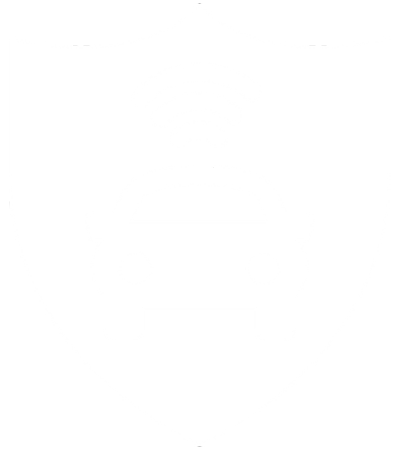As a school leader, you are always looking for ways to improve safety at your school. Ensuring the safety of your school community can be one of the most critical tasks in 2023. Investing in a comprehensive set of security tools to keep your campus safe is essential, but what solutions should you choose? From access control systems that monitor entry and exit points effectively, to surveillance cameras with advanced license plate recognition technology for an extra layer of protection – there are many efficient options available to help protect every corner on your campus.
After working with thousands of K-12 schools nationwide, we’ve been able to plot schools on our K-12 safety quadrant to give school leaders a better sense of what elements of their safety systems are inefficient, and leaving them open to security risks.
Here are three examples of schools that can fall on our K-12 safety quadrant and where their operations fall in terms of safety and efficiency.
#1: The Average School: Outdated, Manual Processes, Open to Security Risks
These schools still operate on manual processes that are reactive, putting them at higher risk of safety issues. Without the proper processes, these schools have a daunting challenge in monitoring the safety of their students. From recognizing a sex offender attempting to enter the school to receiving an alert of a disgruntled former employee on campus — with the current set of tools, these schools have limited or no visibility into who is on their campus or if they’re authorized to be there. Without adequate systems in place, it’s nearly impossible for these schools to keep track of who is on campus at all times. For example, a school with an emergency attendance process based entirely on paper is often inefficient and puts the students and staff in danger if a situation arises. Manual operation processes can also lead to less accurate data, leaving staff members without the information they need to take the best course of action.
Key indicators of these high-risk schools often include:
- Traditional SIS attendance
- Manual Reunification
- Paper-based emergency attendance
- Manual/offline parent communication
- Legacy visitor management
- Non-K12 license plate recognition cameras
- Non-K12 visitor management
#2: The Not-Quite-There School: A Mixture of Tech-assisted Tools and Manual Processes
With the introduction of new tech-assisted tools, these schools are steadily building momentum toward creating an environment that values safety and operational efficiency. They have already invested in technology to help monitor visitors more effectively and introduced a dismissal solution to upgrade their existing procedures but still maintain manual processes that can leave them open to security risks. In some cases, these schools have likely taken steps to update safety processes, but the technology is often outdated and not up to par with the safety standards expected in 2023. For example, using an outdated GPS system in an emergency dismissal may lead to inaccurate information that could put a student with an unauthorized driver. To help ensure that these types of risks are minimized, these schools need to improve how they’re currently managing their safety operations.
Key indicators of this medium-risk, somewhat efficient schools often include:
- Software-assisted emergency management
- Bus ridership management
- Parent communication tool (standalone)
- App/GPS-assisted dismissal
- Semi-automated dismissal (handheld-RFID scanners)
- Multi-level school alerts
- Activity, event, or walker check-in/out
#3: The Leader in School Safety: Schools with Modern Automation Equipped to Auto-Detect and Prevent Emergencies
At this level of safety, schools are leaders in school safety. These schools have taken a proactive approach to safety, with processes that are both automated and efficient, designed specifically to auto-detect exceptions that help to prevent emergencies on K-12 campuses.
Automation tools have helped them modernize processes and make sure that staff members have access to the most up-to-date information, enabling them to quickly assess a situation and respond in a proactive manner. They have Per-Period Automated Attendance & Digital Hall Passes allowing their students to check in to each class period themselves using a QR code, barcode, or RFID tag. The teachers, front office staff, and administrators at these schools have real-time, school-wide insight into who is on campus, should they be there, and where they were last seen. They can proactively identify risks, send instant emergency alerts, and take real-time emergency attendance quickly and seamlessly for all user types on their campuses (students, staff, teachers, and visitors).
They have a sense of confidence knowing that campus is protected. They have license plate recognition solutions that automatically screen vehicles arriving and departing from their campus (day and night), allowing for real-time awareness of every vehicle on their school property. During the school day, their student & visitor management solution screens visitors, checks staff in, and even manages student attendance — providing a full accounting of their campus population.
This level of school safety allows for real-time tracking of students and staff, as well as the ability to quickly respond to any emergency situation. To reach this level of school safety, the school has invested in consolidating student safety, physical attendance, dismissal, and parent engagement into one SIS-connected platform.
Key indicators of these safe, proactive schools often include:
- Digital Emergency Attendance
- Attendance Automation including Digital Hall Passes
- Visitor Management with Activity/Event Check-in capabilities
- Electronic/AI Reunification
- Full carline automation during Dismissal using Automated License Plate Recognition + AI
- Perimeter Security using Automated License Plate Recognition + AI
By understanding where your school falls on the K-12 Safety Quadrant, you can begin to develop a plan for improving security and safety in your school. Whether it’s investing in automated solutions or implementing modern processes, taking steps toward creating a safer environment for students and staff is a critical part of any successful school environment.
Start assessing where your school falls on the K-12 Safety Quadrant today.


